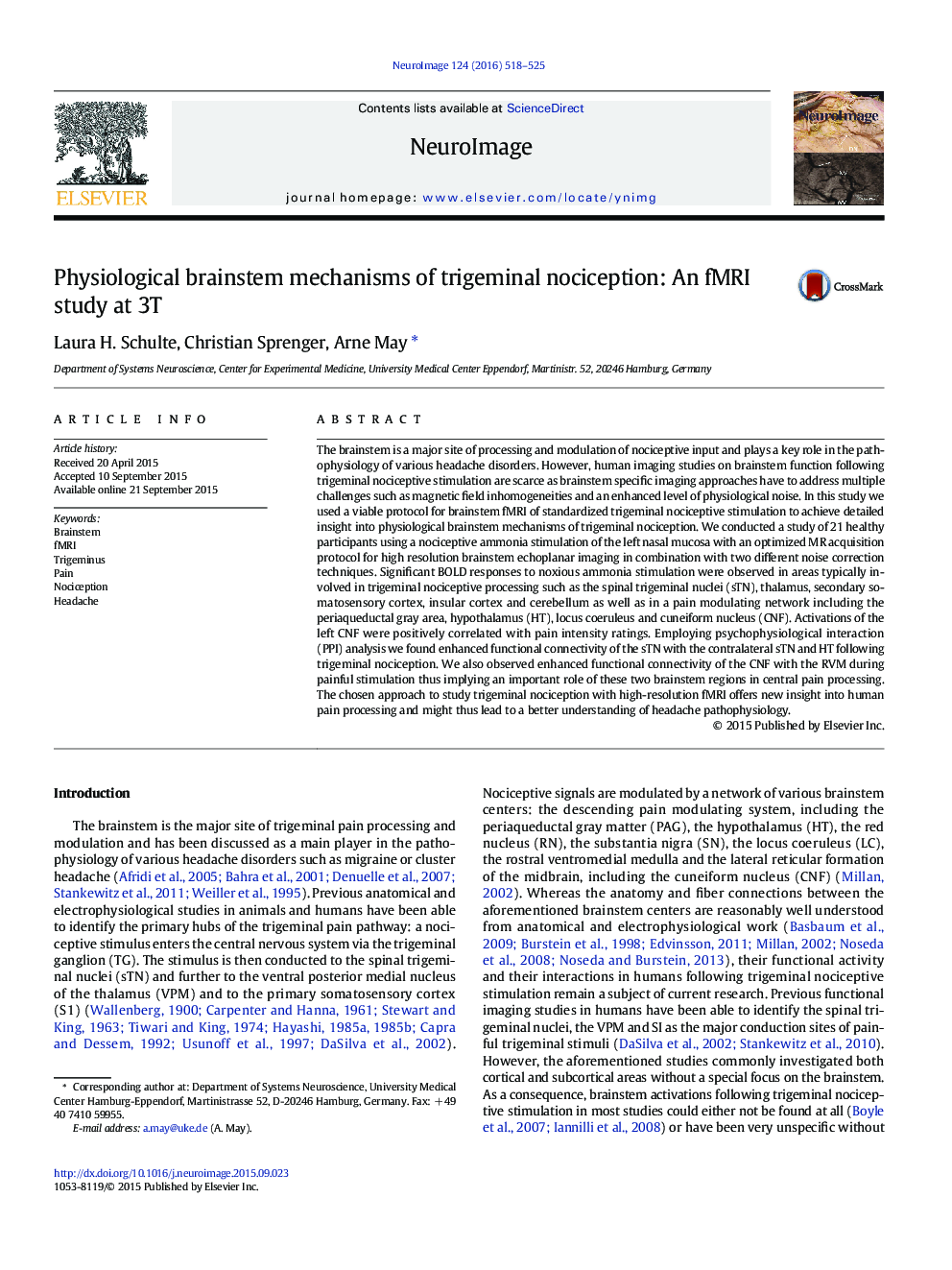| کد مقاله | کد نشریه | سال انتشار | مقاله انگلیسی | نسخه تمام متن |
|---|---|---|---|---|
| 6024318 | 1188658 | 2016 | 8 صفحه PDF | دانلود رایگان |
عنوان انگلیسی مقاله ISI
Physiological brainstem mechanisms of trigeminal nociception: An fMRI study at 3T
دانلود مقاله + سفارش ترجمه
دانلود مقاله ISI انگلیسی
رایگان برای ایرانیان
کلمات کلیدی
موضوعات مرتبط
علوم زیستی و بیوفناوری
علم عصب شناسی
علوم اعصاب شناختی
پیش نمایش صفحه اول مقاله

چکیده انگلیسی
The brainstem is a major site of processing and modulation of nociceptive input and plays a key role in the pathophysiology of various headache disorders. However, human imaging studies on brainstem function following trigeminal nociceptive stimulation are scarce as brainstem specific imaging approaches have to address multiple challenges such as magnetic field inhomogeneities and an enhanced level of physiological noise. In this study we used a viable protocol for brainstem fMRI of standardized trigeminal nociceptive stimulation to achieve detailed insight into physiological brainstem mechanisms of trigeminal nociception. We conducted a study of 21 healthy participants using a nociceptive ammonia stimulation of the left nasal mucosa with an optimized MR acquisition protocol for high resolution brainstem echoplanar imaging in combination with two different noise correction techniques. Significant BOLD responses to noxious ammonia stimulation were observed in areas typically involved in trigeminal nociceptive processing such as the spinal trigeminal nuclei (sTN), thalamus, secondary somatosensory cortex, insular cortex and cerebellum as well as in a pain modulating network including the periaqueductal gray area, hypothalamus (HT), locus coeruleus and cuneiform nucleus (CNF). Activations of the left CNF were positively correlated with pain intensity ratings. Employing psychophysiological interaction (PPI) analysis we found enhanced functional connectivity of the sTN with the contralateral sTN and HT following trigeminal nociception. We also observed enhanced functional connectivity of the CNF with the RVM during painful stimulation thus implying an important role of these two brainstem regions in central pain processing. The chosen approach to study trigeminal nociception with high-resolution fMRI offers new insight into human pain processing and might thus lead to a better understanding of headache pathophysiology.
ناشر
Database: Elsevier - ScienceDirect (ساینس دایرکت)
Journal: NeuroImage - Volume 124, Part A, 1 January 2016, Pages 518-525
Journal: NeuroImage - Volume 124, Part A, 1 January 2016, Pages 518-525
نویسندگان
Laura H. Schulte, Christian Sprenger, Arne May,